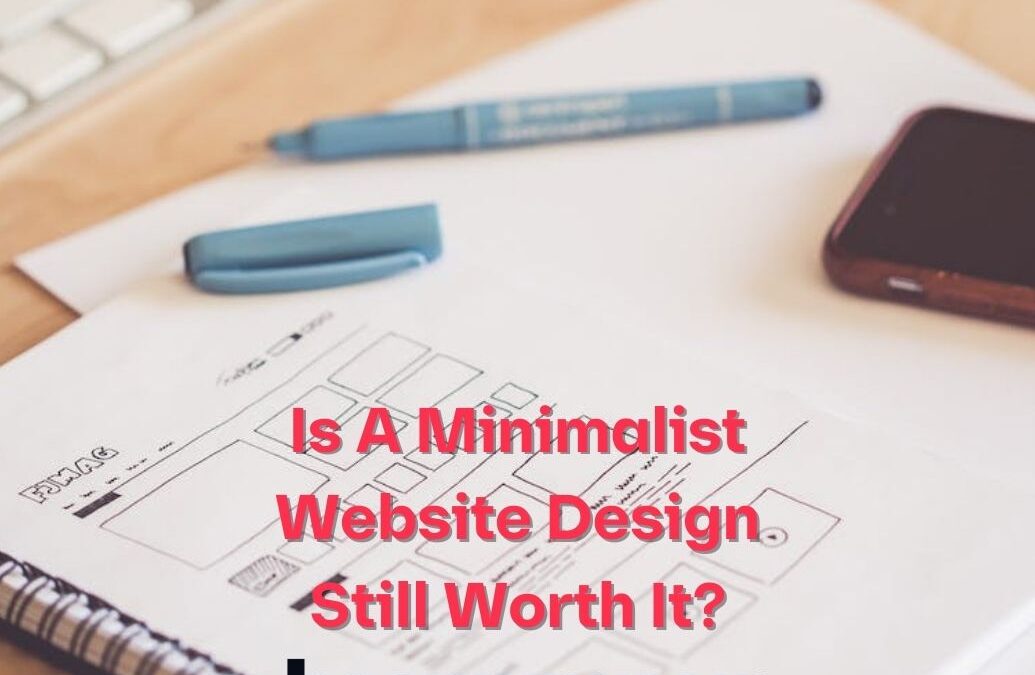In this week’s blog, let’s talk about minimalist website design. Is this still worth doing?
Minimalist website design became a trend in the early 2010s, when developers were looking for a cleaner, sleeker design that went with the demand of website audiences.
You see, minimalism is popular because of how visual complexity affects the visitor’s perception of the website within 50 milliseconds after arriving.
Because of this, website visitors became more attracted to websites that featured clean, simpler to navigate designs.
Easy access to necessary links and content has become a must for website visitors, given their short attention span.
Spanning The Web
From the early 2010s up to now, minimalist web design has seen an upward trend in popularity, with website builders like WordPress and Squarespace offering themes that fit its requirements.
Even Google, the world’s largest search engine, demonstrates minimalist principles.
The core feature of the Google homepage is its central search function, and its design is tailored entirely to support it.
Every element that does not serve a functional purpose has been removed, except for branding, which is highly visible. The uncluttered interface prioritizes branding without being intrusive, as there are few other visual distractions on the page.
Adopting Google’s minimalist approach can greatly enhance user experience and encourage interaction with the site.
Minimalist Website Design Traits
1. Simplicity
Defining simplicity in the realm of web design is ironically a somewhat complex task.
It involves more than just the visual appearance of a website; it encompasses the overall experience that the user has when interacting with the site.
The user experience is made easier when tasks can be completed effortlessly and without interruption. The key to achieving this type of simplicity lies in intuitive navigation.
Simple designs are not confusing or distracting to users, allowing them to achieve their goals with ease.
The design should blend seamlessly into the user’s experience, allowing them to focus on their tasks.
2. Negative Spacing
In this situation, negativity has a positive impact. Negative space refers to the voids between visual components. The more vacant space, the more emphasis is placed on existing elements.
For example, on Google’s homepage, the search function is easily visible to users, thanks to the effective use of negative space, which prevents information overload.
Designers aim to create a less stressful and more engaging user experience by removing irrelevant content from the page.
Proper use of negative space is challenging, as it is important not to eliminate too much and cause users to search unnecessarily for features. Minimalist design’s primary goal would be defeated.
Negative space is sometimes referred to as white space, but it is not necessarily white. Some websites use colorful backgrounds to liven up the voids.
3. Typography
Typography is an essential aspect of web design regardless of whether one uses minimalist principles.
Minimalist design, however, relies heavily on typography to create a dramatic impact as it involves fewer page elements.
This approach highlights the importance of making deliberate typographical choices, which can have a significant effect on the overall design.
Minimalist Website Design For Great User Experience
When it comes to web design, the saying “less is more” should be reconsidered. If less accomplishes more, then it is a valid principle.
As the field of web design becomes increasingly focused on user experience, designers must strive to create sites that are both user-friendly and visually appealing.
By employing minimalist principles thoughtfully, designers can craft sites that are efficient and eye-catching, all while using fewer elements.
This simplification can lead to enhanced online interactions for users.
Want to learn more about employing minimalist website design? Contact us and check out our website services today.

